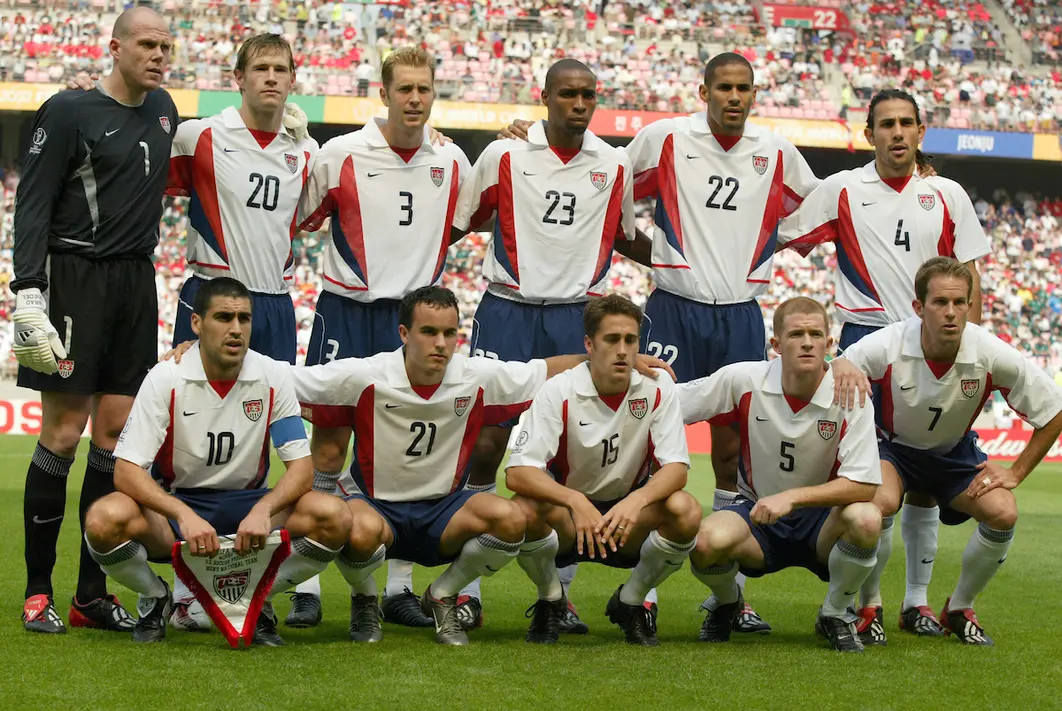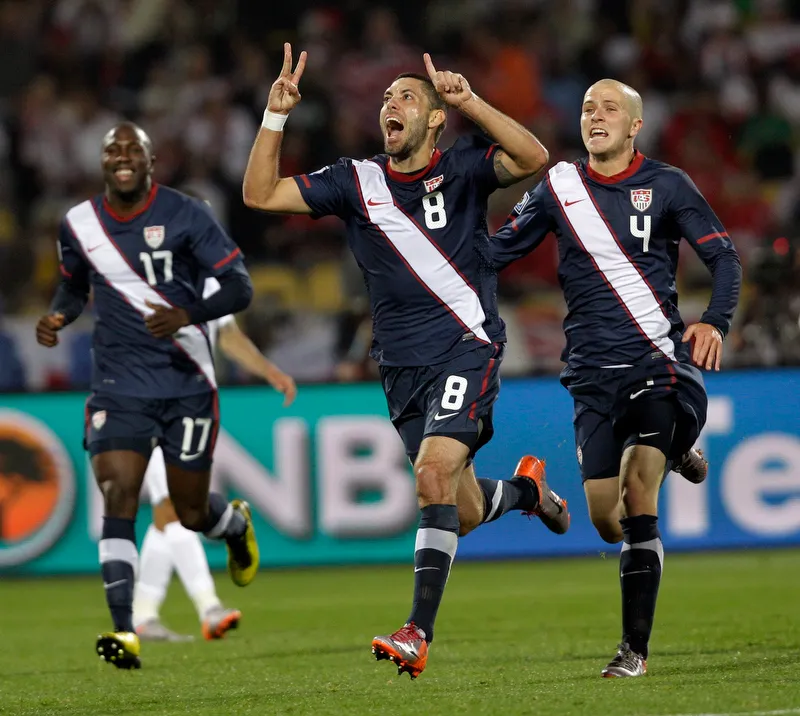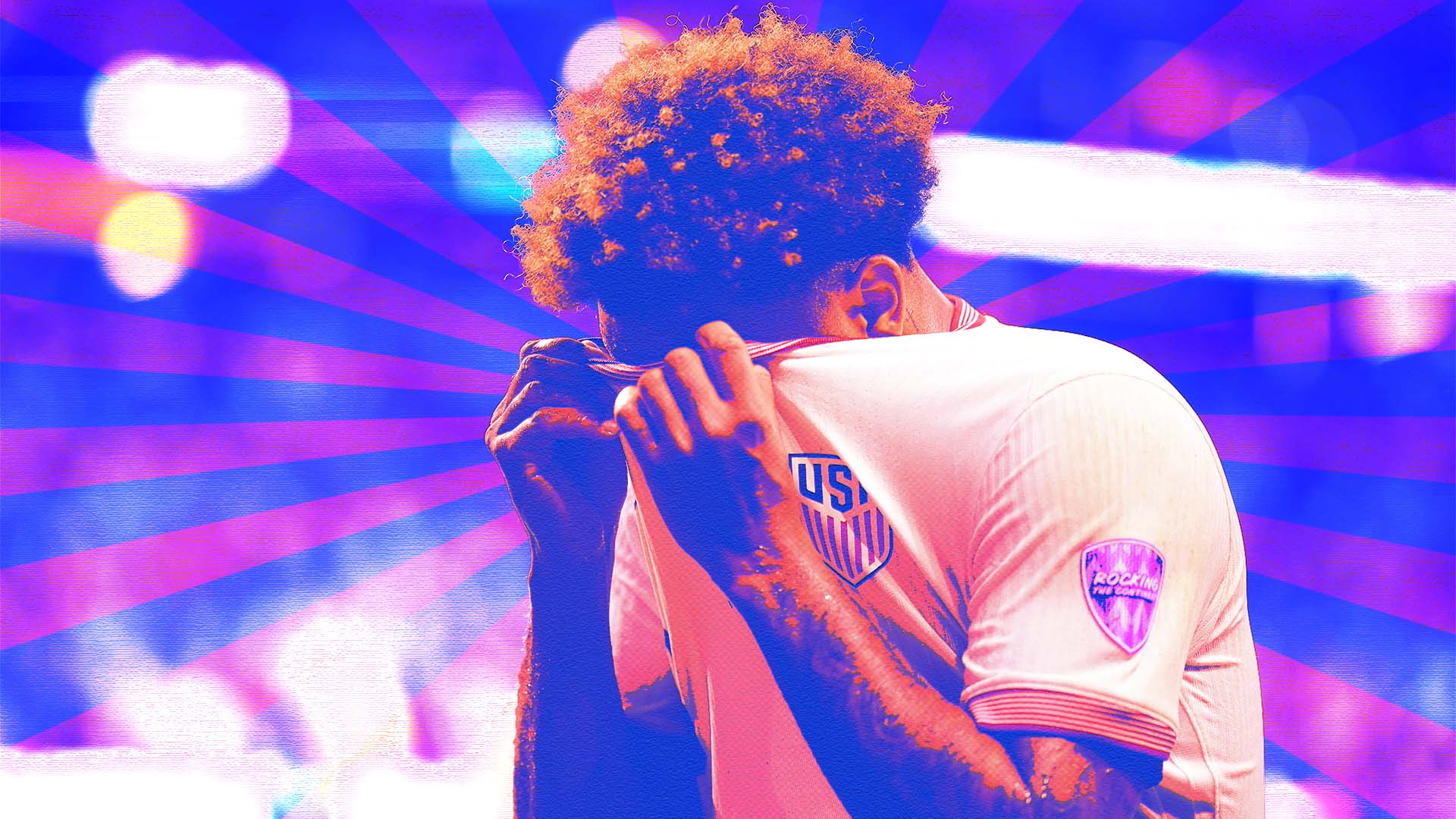The expectations around the USMNT over the past five years have been high. And while they are maybe warranted, all the talk about this “golden generation” got us thinking — just how much better is this team compared to USMNTs of years past?
Heading into the 2024 Copa America, many United States men’s national team fans were confident about their chances. Making it out of their group wasn’t even a question, and there were even talks about finishing on top and making a run to at least the semifinals.
A resounding 2-0 victory over Bolivia in the opening group stage match strengthened fans’ beliefs, and all eyes were already onto the knockout rounds.
Then, the team got CONMEBOL’d — the much bigger, more intense version of getting CONCACAF’d. Hard tackles, dodgy tactics, and general shithousery may be prevalent in North and Central America, but they’re second nature in South America. If CONCACAF thought darkness was its ally, CONMEBOL was born in it.
If you have watched the 2024 Copa América, you are aware of just how intense, scrappy and difficult it is to win the mental edge against South American teams, let alone win the actual games. Refereeing is inconsistent, and you have teams that are made up of some of the most skilled players in the world, along with enforcers that are willing to kill to defend their team and national pride.
Suffice it to say that CONMEBOL is possibly the most intense footballing federation in the world, and every game is a war of attrition. In the match against Panama, the USMNT was clearly the stronger team, yet they fell prey to mind games, with Tim Weah losing his focus for a split second and in a fit of blind rage, getting sent off.
Then, against Uruguay, the U.S. couldn’t find any flow due to some controversial calls from the referee and the level of physicality that is rarely, if ever, matched by teams outside of CONMEBOL. It is CONMEBOL’s tournament; it is their standard, and if CONCACAF teams want to be successful, they need to play the same game because they weren’t prepared. Panama and Canada were the only teams from CONCACAF to move through the group stage.
So, is it really a failure that the USMNT didn’t make it out of the group stage? Is the team really so good that all of the blame lies on Gregg Berhalter? After all, this team is allegedly the strongest team the U.S. has ever had.
While we aren’t going to debate if Berhalter is the main issue, we wanted to compare past USMNT squads to the current squad and see if this is truly the golden generation everyone says it is.
2002 World Cup

The 2002 World Cup, held in South Korea, saw the USMNT get out of their group in second place, ahead of Portugal and Poland and sitting two points behind the hosts, South Korea.
The squad featured multiple players who would become full-blown USMNT icons, such as Landon Donovan, Cobi Jones, Claudio Reyna, Brad Friedel, and DaMarcus Beasley. Berhalter, then a player, was also a part of this squad.
In the knockout stage, the USMNT moved past Mexico 2-0 to face world giants Germany in the quarterfinal. They would bow out to the Germans, but at the time it was a massive moment for the program. It was the furthest the nation had made it in the competition since the inaugural World Cup in 1930, where it made the semifinals of a 12-team tournament.
If the 1994 World Cup, which the U.S. hosted, was the spark to ignite soccer in the country, this was the first real evidence of a blaze developing. However, the USMNT hasn’t matched this feat since, and it remains the only World Cup round of 16 match the country has ever won.
From a squad-level standpoint, the Americans had 11 MLS players, with the other 12 on the roster playing in Europe. This was not a weak team, as the MLS players were stars for their teams, and the European-based players featured heavily for their club sides. Five of the 12 — Tony Sanneh, Kasey Keller, John O’Brien, David Regis, and Earnie Stewart — eclipsed the 2,000 minute mark on first-division teams.
The current U.S. Copa America roster has nine players with such a distinction, but several important players that feature heavily in a USMNT kit, including Weah, Gio Reyna, Ricardo Pepi, and Folarin Balogun, notably haven’t, whether due to injuries, lack of consistency, or simply roles as rotational players.
Reyna in particular has been a concern. He has proven that he can be a starting-caliber player in a top-five European league, but injuries and inconsistency have kept him off the pitch over the past few seasons. In the 2023-24 campaign, he logged just 607 total minutes between Borussia Dortmund and Nottingham Forest.
We can look at Landon Donovan for a simple comparison. Donovan had stints in Europe but ultimately had better success in MLS. Instead of riding the bench or playing reserve matches, Donovan was given time to play competitive matches, build his confidence, and, with age, become a better leader. He showed that even though he played in what was considered a weaker league, playing week in and week out can be more beneficial to a player’s development than bouncing from club to club. He has the hardware to prove it too, winning the 2002 World Cup Best Young Player award.
2010 World Cup

In 2010, the USMNT once again made it out of their group, finishing in first over England, Slovenia, and Algeria, then losing in the round of 16 to Ghana in extra time.
Once again, this squad featured players who played at a really high level. The narrative that the 2024 USMNT is its best group of players by a mile is completely false. Sure, the current group has the most potential. They are younger, and there is more depth, but the players taking the field are still quite young, still honing their craft, and seemingly still learning how to play under the immense pressure of American media.
The 2010 squad had Donovan, Beasley, then featuring for Rangers, Clint Dempsey, who was banging in goals for Fulham, Tim Howard, who was the starting keeper for Everton (at the time a top-6 team in the Premier League), and a handful of other talented members.
Seven players — Howard, Dempsey, Jonathan Spector, Carlos Bocanegra, Michael Bradley, Steve Cherundolo, and Marcus Hahneman — logged over 2,000 minutes for clubs in top-five European leagues. The 2024 USMNT Copa America roster has the same.
2016 Copa América
Interestingly, the USMNT that made it the farthest in a major tournament in recent memory was a team that, on paper, looked to be the weakest. Many of the players who had played so much in England in the early 2000s and early 2010s had either retired or moved back to play in MLS, with the rest of the squad being filled out with MLS stars and a sprinkling of European talent, such as a 17-year-old Pulisic. Bowing out in the semifinals, the team was led by Dempsey, Bradley, and Howard, who by then had become talismans for the nation.
Otherwise, when you look through the roster, you see a list of names that featured at moments for the team but weren’t necessarily perennial first choices for the USMNT. Once again, this highlights that talent on paper does not make up for playing regularly, succeeding regularly, and fitting into the system of the team.
Current Squad

While it is easy to blame Berhalter for the poor performances of the USMNT (and maybe he has had long enough to make changes), saying that this team should be easily winning groups and making it to the Copa América semis is foolish. Similar to the English media, the U.S. football media has built a lot of the team’s top players into people that they are not.
We can look at the entire list of European-based players on the USMNT and see that fans and pundits alike have placed them multiple tiers above their actual levels. That is not to say that they are not playing at a great level or that the program has not grown leaps and bounds, but this squad is not filled with the best players in the world, and it is disrespectful to other teams in CONMEBOL and CONCACAF to say that the USMNT is so far ahead of them.
Should the USMNT have made it out of their group in this Copa América? Yes, they probably would have if they had been smarter and more collected. But was it a complete anomaly that this team didn’t? No. They are not world beaters, and the collective arrogance around this team has only hurt the program and discredited the growth of the sport in America.
Unrealistic expectations can crush even the strongest individuals. Maybe it is time to be more realistic about the USMNT’s current situation and what growth looks like leading up to the 2026 World Cup.








